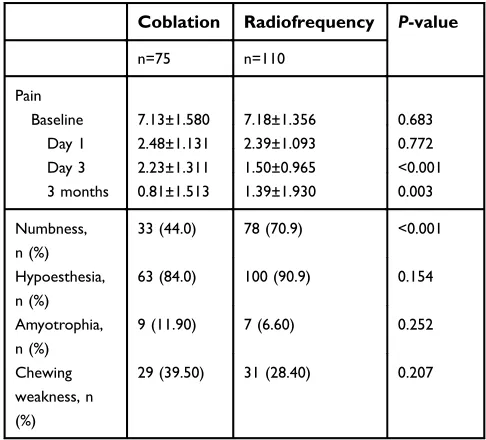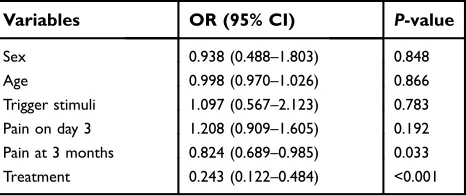<p>Comparison of the short-term outcomes after low-temperature plasma radiofrequency ablation (coblation) in the Gasserian ganglion for the treatment of idiopathic trigeminal neuralgia</p>
Full text
Figure




Related documents
It was decided that with the presence of such significant red flag signs that she should undergo advanced imaging, in this case an MRI, that revealed an underlying malignancy, which
Hashin proposed different failure modes associated with the fibre tow and the matrix, considering, in both modes, differences in tension and compression (Hashin 1980), as shown in
The objective of this study was to develop Fourier transform infrared (FTIR) spectroscopy in combination with multivariate calibration of partial least square (PLS) and
5 the thickness measurement of a carbon sample is shown as a colour-coded 2-dimensional plot after first lapping the sample (5a) and then after polishing (5c) with the
LowMC is a flexible block cipher family based on a substitution-permutation network where the block size, the key size, the number of S-boxes in the substitution layer and the
Purpose: To assess the 3-year safety and ef fi cacy of femtosecond laser-assisted intrastromal corneal ring segments' (ICRS) implantation followed or accompanied by
accompanied by the formation of insoluble aggregates with β -sheet rich structure (Figure 3B) and 75.. anti-fibril OC antibody recognition by dot-blotting (Figure 3C), agreeing
The main research question examined how can we identify the level of achievement students obtain as they solve problems in the novice-expert continuum by inferring levels through
